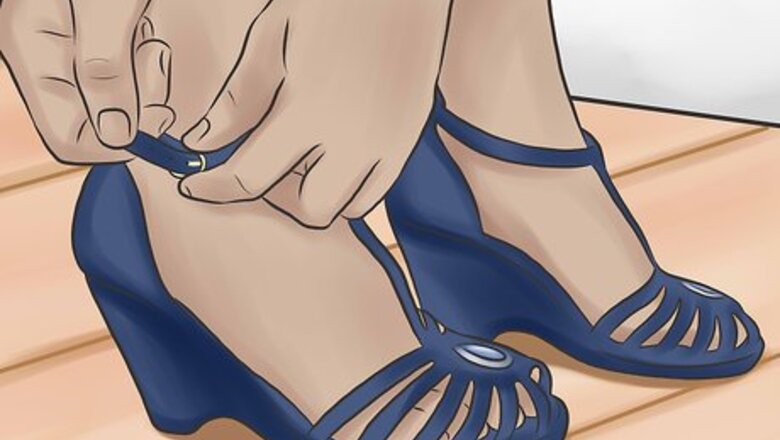
views
Trying The Heels On

Put the heels on your feet. Slide your feet into the heels and secure them with any straps or buckles that need to be closed. This will be the first indication if the heel fits. Your feet should fit snugly into the heels If you struggle significantly to fit your feet into the heels, the heels are probably too small. In this case, you most likely need to go up a half or whole size. If your feet slide into the heels too easily, and there is a lot of room between the insides of the heels and your feet, the heels are probably too big. In this case, you most likely need to go down a half or whole size.
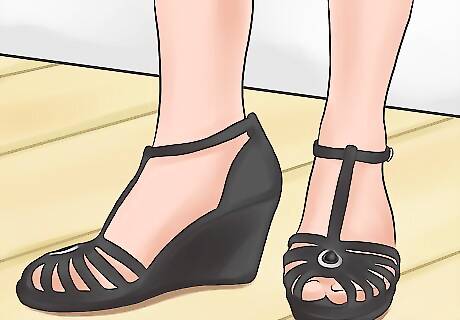
Stand up in the heels. Once the heels are secured on your feet, stand up straight and notice how your feet feel. Do your feel pinching anywhere? Is any part of your foot (heel, toes, side) hanging off or outside of the shoe? Are there any areas of the shoe that aren’t making contact with your foot that should (like the heel)? If you feel any immediate discomfort or exceptional looseness before even walking in the heels, you can assume that you need to make adjustments in the shoe sizing. Try inspecting how the shoes look with the help of a mirror. A mirror can give you an added perspective.
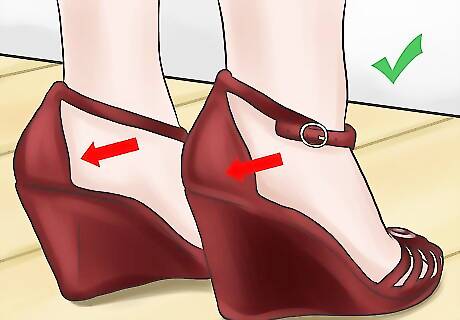
Inspect the heel area. While standing, the heel of the shoe should rest on your skin. If there is any room between the skin of your heel and the heel of the shoe, it should be no more than about ¾ cm to 1 cm. That is because while wearing heels, your feet are likely to expand and swell. If there is about 1 cm (or a tad less) of room between your heel and the shoe, you give yourself room for your foot to inevitably and comfortably swell. If the heel of the shoe is cutting into, squeezing, or scraping the skin of your heel, the shoe is probably too small. Wearing heels that are too small can give you cuts and blisters on your heels. If your foot is sliding or lifting out of the back of the shoe, or there is more than 1 cm of room between your heel and the heel of the shoe, the shoe is probably too big. Wearing heels that are too big makes for too much movement in the shoe. This movement creates friction between your skin and the heel that can also give blisters.
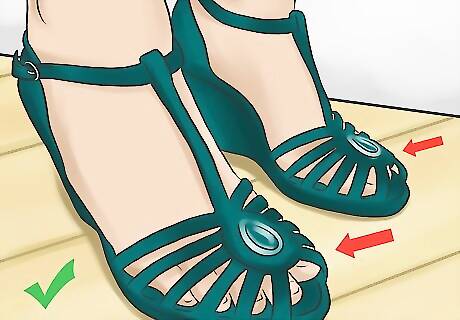
Inspect the toe area. While standing, your toes should be positioned at the front tip of the shoe. This will vary since there are closed toe boxes, peep toe boxes, and open toe boxes. However, regardless of the style of toe box, your toes should feel comfortable in the shoe. Are your toes pushed together tightly, with little to no wriggle room? If you can see your toes, do they look red or purple? Does the upper, top part of your foot bulge outward from the shoe? Your toes should fit securely in the front of the toe box, but have a little bit of spacing to wriggle around. If the heels clearly feel too tight and uncomfortable in the toe area, they are probably too small. If your toes are hanging off the front edge of the shoe, or have too much wiggle space (as in you can move your toes around significantly), the heels are most likely too big.
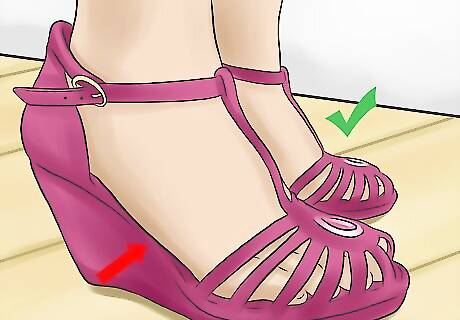
Inspect the sides of your feet. While standing, the sides of your feet should remain within the parameters of the heel. This means that the sides of your feet should touch the inside edges of the heel comfortably. Your feet should not bulge out from the sides of the heel, and there should not be excessive space between the edges of your feet and the insides of your heel. Excessive space on the edges of the heel means you can comfortably fit a finger or two in between your foot and the heel of the shoe. If your foot bulges out from the heel in any way, or exceeds any of it’s natural parameters, the shoe is most likely too small. If there is excessive space between the sides of your feet and the inside edges of the heel, the heel is probably too big.

Walk around the heels. You can’t fully know how the heels fit until you practice walking around in them. Make sure both of the heels are adjusted to the same tightness, and walk up and down the aisles of the store. Consider walking around to be a live test run of how you will actually feel wearing the heels. Remember to inspect the key fitting areas of the heels (heel, toes, sides) as you walk around. Most often, uncomfortable rubbing or noticeable spacing becomes evident while walking around with the heels on. That is why walking in the heels before you buy them is so important.
Measuring Your Feet
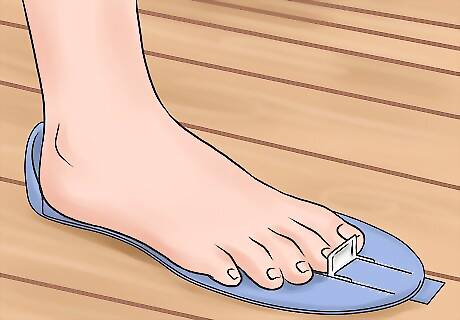
Get your foot measured at a shoe store. Most, if not all, shoe stores will have the necessary tools to properly measure your foot. Some stores have a carpeted scale on which you can place your foot to find your shoe size. There are also devices that can fit around your foot and adjust to your foot dimensions in order to determine your shoe size. If you can’t find these tools around the store where you are shopping, simply ask a store employee if they could help you measure the size of your foot. Getting the proper measurements of your foot will allow you to pick out shoes that fit your foot best. An accurate shoe fitting can improve comfort, security, and appearance.

Measure your foot yourself. Use a pencil, and trace the outline of both of your feet on two separate sheets of paper. Be sure to trace as close to your foot as possible. After you have traced all around both of your feet, use a ruler to measure front the top most part of your foot (at your toes), to the bottom of your heel. Then, measure across the width of your foot from the furthermost edges. Your traced foot should now have a giant cross in the middle of it. Lined notebook paper may work best for tracing your feet since it has straight lines to take measurements from. However, any sheet of paper will do.

















Comments
0 comment